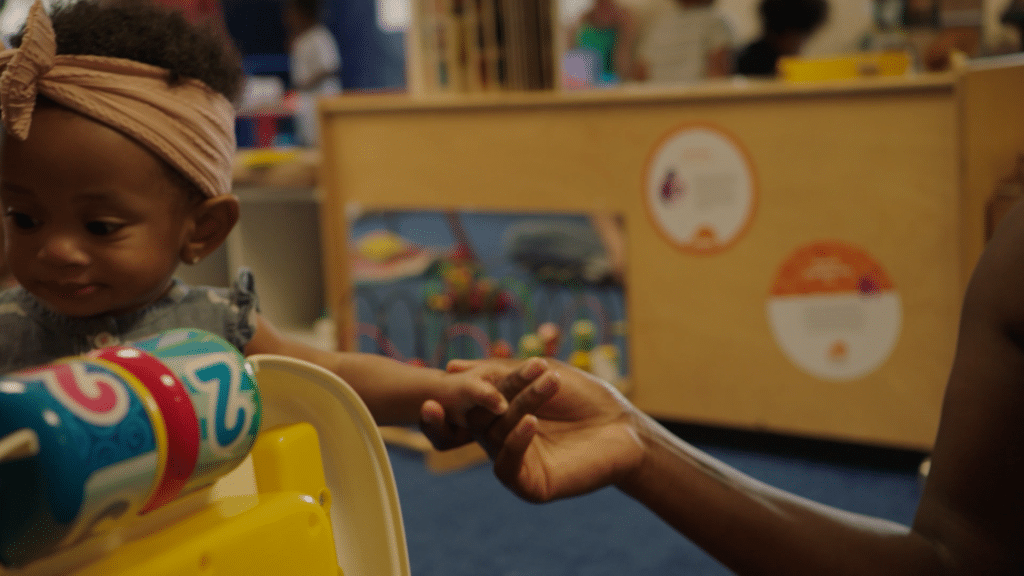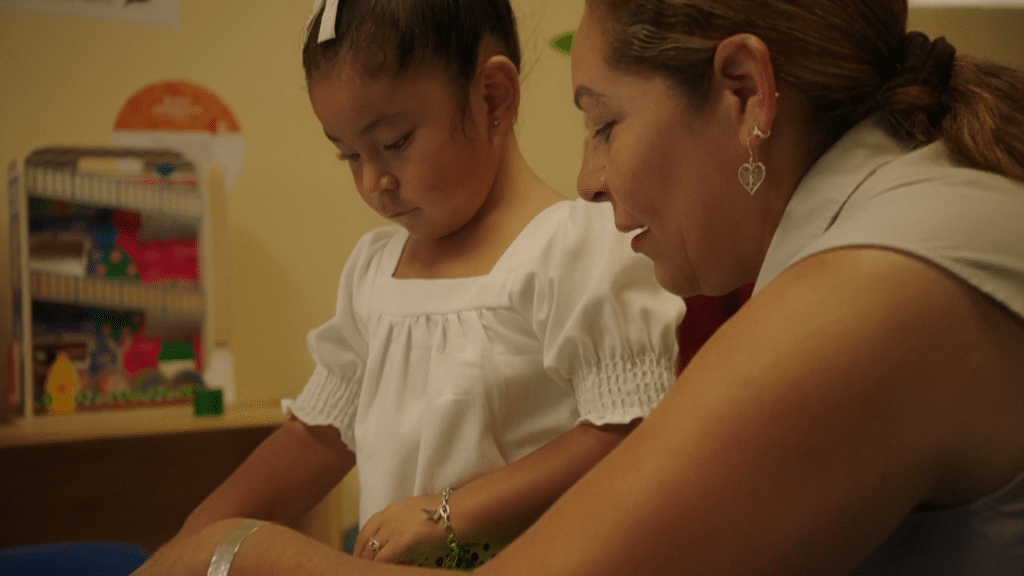Think of a young child in your life, whether a newborn baby or a toddler. What do they need to thrive? You’re probably picturing the basics: food, clothes, and a safe place to live. You may think of nurturing relationships with parents and caregivers, which are essential to development. We know that when babies get a strong start in life and families can support their healthy development, they can build the foundations for a lifetime of health and well-being. It’s easy to picture a young child growing, learning, and thriving.
But what about when that child’s family relies on public systems to access some of those basic necessities, like food, health care, and financial support? Does the picture get less clear? How do you envision families accessing these resources, balancing the challenge of navigating complex bureaucracies while taking care of their child and forming a loving bond?
All too often, the very programs and services intended to help families and make their lives easier are confusing and disconnected, acting as barriers to the care and support families need.
This year, funding cuts have tested systems further – underlining both the breadth of families that rely on them and the tenuous nature of the support they provide. At a time when families across our country are facing anxiety about how to afford essentials like groceries, these cuts add urgency to the challenges families face and emphasize the importance of improving them. It’s only becoming more important that we reimagine the relationship between people and government and rebuild the systems that serve families so that they deliver on what families need to thrive.
By listening to what kind of support families need and collaborating with the people working within these systems, we hope to reimagine what a connected system of care could look like – one with families at the center.
How are Public Systems Falling Short?
In 2024 as part of launching our Children and Families initiative, we commissioned a landscape assessment of maternal and child health systems in three California counties: Alameda, Fresno, and Monterey. The goal was to document how publicly funded systems are structured and connected and to identify opportunities to build a more aligned and effective system of care for families with young children. VIVA Social Impact Partners conducted the assessment, which included interviews with system decision makers, such as Directors of Public Health and Social Services Departments along with Child Care Resource and Referral agencies, from each of the three counties.
The recommendations that emerged from those interviews revealed that system leaders have ideas for how to serve families more effectively and ultimately improve outcomes in maternal and child health. These ideas – improving training and development for staff, increasing the capacity of community-based organizations, for example – have potential to bring progress. But as some leaders themselves acknowledge, the most meaningful solutions must be built around the families they hope to serve.
That’s why the VIVA team also interviewed parents who had experience with public systems, hoping to learn about their experiences accessing services. They asked families a simple but powerful question: “If you could wave a magic wand to change one thing to make this process easier or better for families like yours, what would it be?”
We know that these systems can better serve all families. At the same time, the current maternal and child health crisis in the Unites States demonstrates that Black, Indigenous, and Latino communities face especially significant challenges. The VIVA team focused explicitly on the experiences of families in these communities in the belief that improvements to these systems would benefit all families.
Parents had a lot of innovative ideas for how to make services more accessible and effective for families. For example, the assessment features the story of an Alameda County mother who, when she became pregnant with her first child at 24, was both excited and worried. As a Medi-Cal member, she worried about covering medical care and essential expenses for her baby. Her clinic referred her to a home visiting and prenatal program that provided regular check-ins, growth and nutrition guidance, and reassurance about her baby’s health. She treasured the sense of security these visits provided — she felt confident that her son was making progress and thriving.
But her interactions with public systems haven’t always been easy. She describes repeated unanswered phone calls and fruitless in-person visits when originally trying to enroll in Medi-Cal. She even had her coverage canceled for six months during her pregnancy due to lost paperwork after a change of address. This caused her to miss two prenatal appointments and forced her to pay out of pocket before gaining temporary pregnancy coverage. It took persistence: she made multiple office visits and ultimately needed a manager’s intervention to fully restore her insurance.
While Medi-Cal and her home visiting program have been reliable once established, other supports have been harder to access. Over a month before speaking to VIVA Social Impact Partners, she had applied online for child care assistance, so she could work more hours and finish school, but had received no follow-up beyond a brief confirmation call. She currently relies on her mother-in-law for child care.
Listening to Families
This story isn’t unique. Many other parents told VIVA Social Impact Partners about the essential support and services they accessed through public systems. Many also shared similar frustrations.
No one wants this outcome. The policymakers who shape these systems, the leaders who administer programs and services, and the families that benefit from them all want the same thing: for young children to have the support they need to get a healthy start in life.
That’s why our Children and Families initiative is funding work to engage the leaders who are eager to make change and to connect them with the real stories of how families experience these systems every day.
Supporting these leaders in their efforts to make change – connecting them with trusted community-based organizations that support families and inspiring them with input from the families they hope to serve – will help them test promising new ideas and solutions – and ultimately build a more connected system of care that better meets the needs of all families.




